Here they are, all 50 states in the Union,
ranked according to their beer. A couple notes about our criteria. Quantity and
quality are both important, but quality’s a bit MORE important. If you’re a
small state turning out a disproportionate amount of great beer, it did not go
unrecognized. We also gave a boost to states who played a historical role in
American beer as we know it today. We also argued a lot, so if you want to do
that as well, please join us in the comments!
50. Mississippi
There’s a reason that Mississippi’s
the home of the blues. It has a lot to do with the fact that the state’s got
fewer breweries than Blind Willie Nine Fingers has digits.
49. West Virginia
Misty taste of moonshine, teardrop in
my eye. Note: the teardrop is because there isn’t enough good beer to drink
here.
48. Rhode Island
‘Gansett. That’s about all there is
to say. ‘Gansett!! Luckily it’s really fun to say.
47. North Dakota
You’d think that two decades of
enduring wood-chipper jokes would drive more North Dakotans to drink, but noh…
noh, there’s not much brewing going on here, though a can of Fargo Brewing Co.’s
Iron Horse Pale Ale is a mighty fine treat.
46. Nevada
Booze is a big business in the Silver
State, but with respect to brewers like Great Basin, most of that silver is in
Bullet form… given out for free. At the nickel slots.
Credit: Jennifer Bui
45. South Dakota
When every biker from Portland, OR to
Portland, ME comes rolling into Sturgis, they probably drink more beer than the
collective frat population of the US. But they subsist on a diet of tallboys and
Kid Rock. And while you’ll find local beer on many taps throughout the state,
those taps are probably gathering dust next to a fresh macro keg. I frequent
SoDak, and when I do, I subsist mainly on Crow Peak’s excellent 11th Hour IPA.
There’s a beer scene lurking in the Black Hills, but it needs some nourishment.
And support.
44. Nebraska
Luckily, the Cornhuskers’ 22 spot in
the preseason AP poll is the only ranking this state really cares
about.
43. Hawaii
People tend to vouch for the
tastiness of the local beer they tried while in Hawaii, which is probably
because THEY WERE IN Hawaii. Kona and Maui and the like make some solid beer,
but it gets a bit of a perception bump from the Hawaiian mystique.
42. New Jersey
All sorts of silly laws, plus a
statewide Red Bull-vodka addiction, stonewalled the development of Jersey
breweries for years, but even though things have freed up a bit, they still
don’t make Taylor Ham beer. Someone make Taylor Ham beer! If anyone answers that
ridiculous plea, it’ll be ballsy up-and-comer Carton.
41. New Hampshire
Every person in New Hampshire is
never more than two hours away from one of the top six beer states in the nation
(gotta keep reading to figure out which!). So while the lack of an established
scene aside from venerable Smuttynose is surprising, we don’t
feel that badly for those who must choose daily between
living free and dying.
Credit: Jennifer Bui
40. Wyoming
The combination of locals having a
lot of time to hone their crafts and the influx of tourists — skiers, Dads
who’ve been penned up in an RV with three kids who could care less about Old
Faithful — has made this sparsely populated wilderness a solid beer spot, with
Snake River and Black Tooth brewing some seriously delicious beers that
collectively pack more IBUs than the state has
residents.
39. Connecticut
Not a ton happening here, but Olde Burnside
makes a uniquely sessionable Scottish Ale, and also sells longswords on its
website.
38. Arkansas
Last year, the Arkansas
Times — whose research we trust, because they obviously weren’t
drinking 11% stouts while writing, unlike some people — reported that the number
of breweries jumped from four to 19… and it’s growing. That, friends, is a
renaissance, with breweries like Core Brewing and Ozark Beer Co. leading a
serious charge from the South. In 10 years, after the brewers get more
comfortable, expect to see Arkansas as a real
contender.
37. South Carolina
South Carolina has 1) many
respectable brewpubs, 2) not very many breweries whose wares make it outside
state lines, and, perhaps best of all, 3) a border with North
Carolina.
36. Kansas
Tallgrass makes some solidly
enjoyable brews for sipping out of a cold aluminum tallboy. The rest of the
state’s beer is kinda just… there. Much like Kansas.
35. Arizona
Stick to iced tea! What’s that?
Arizona Iced Tea isn’t even made in Arizona? Fine. You know what is? Actually
some decent beers (Four Peaks, SanTan), but, hey, things are getting
competitive.
Credit: Jennifer Bui
34. Iowa
If Ray Kinsella had started a hop
farm instead of a corn farm, brewing in Iowa would probably be… exactly the
same, since he plowed over the bulk of said farm so he could have a catch with
Ray Liotta. The bright side? Toppling Goliath, which five years ago brewed a
half-barrel at a time, and now has road-trippers from all over the Midwest
stopping by their taproom to drink that much in a sitting.
33. Tennessee
Whiskey, yes. Country music? Yep.
Connie Britton’s charismatic turn as fading Nashville star Rayna Jaymes? Oh hell
yes! Beer? Meh. That’s not to say that there’s not great beer — what up,
Nashville’s Yazoo and Memphis’s Boscos — but the drop from great to mediocre is
steeper than a Smoky Mountain cliff face. Plus, ain’t nobody — not even Rayna
Jaymes — ever wrote a classic country song while drinking a fancy
porter.
32. Kentucky
Look, bourbon will always be
Kentucky’s first and greatest love, but breweries like Against the Grain are
really giving it something to be proud of when it comes to certain other
alcoholic beverages. Of course, those bourbon barrels have gone a long way to
helping breweries all over the country make your beer more delicious. Although
oddly, Kentucky Bourbon Ale (the state’s most high-profile barrel-aged beer) is
just okay.
31. Georgia
Georgia loses points for not
requiring each and every one of its breweries to make a brew called Sweet
Georgia Brown, but it really lands in the middle by a couple dozen
middle-of-the-road breweries, but no truly great ones. A C+ average might be
passing, but it’s hardly excelling.
30. New Mexico
No, we’re not going to make
a Breaking Bad joke. But we are going to ding New Mexico
for being hot as balls, which makes drinking a thick, delicious microbrew extra
difficult. Also making it difficult is the fact that, despite the efforts of
great brewers like La Cumbre and Chama River, nobody thinks of beer when they
think of New Mexico. Except maybe Schraderbrau. And… DAMMIT!
29. Idaho
For a state best known for potatoes
and, um, potatoes, Idaho’s throwing some serious clout around courtesy of
ballers like Grand Teton, Sockeye, Laughing Dog, and the incredible Selkirk
Abbey. But the scene isn’t fully formed yet, thanks in large part to the fact
that lite beer tastes better while muddin’.
Credit: Jennifer Bui
28. Virginia
Virginia is for beer lovers. Or at
least it’s getting there fast. Another state where weird laws (these ones
involving how much food you needed to sell, for some God-awful reason) held
brewing back for a while, VA’s got some real action going now, from entrenched
favorites like Legend, Star Hill, and Devil’s Backbone, to new kid Smartmouth,
whose canned IPA and Saison are (somewhat) specifically designed for you to
drink on a boat. But they’re really good on land too! And all this leads to an
interesting and telling halo effect: two of its cities — Richmond and Norfolk —
are amongst the three finalists for Stone’s newest super-brewery/blissful
outdoor drinking compound.
27. Louisiana
Louisiana’s another state where the
joy to be had drinking beer there outstrips the actual quality of anything
produced in-state. Obviously the beer discussion here starts with Abita. Purple
Haze sounds more exciting than it tastes, but some of their less widespread
releases make up for their more average flagships. If you’re looking for an
intriguing up-and coming outfit to keep an eye on, Parish Brewing Co. merits
your attention.
26. Oklahoma
Truth be told, a few years ago
Oklahoma wouldn’t have placed nearly this high, but the meteoric rise of Prairie
Artisan Ales as one of those “holy crap have you tried this” breweries that
people cover some serious distance to visit has really raised its
profile.
25. Alaska
Hey, it’s cold there. Often. Which
leaves plenty of time to stay inside and brew. And they do, routinely rating as
one of the top states in terms of barrels of craft beer produced per capita. But
enough boring stuff! Get your hands on excellent brews like Midnight Sun
Berserker, Alaskan Barley Wine, and Anchorage Bitter Monk.
24. Maryland
So yeah, it’s a little odd that
Maryland’s most prominent craft outfit (Flying Dog), is a Colorado transplant,
but the fact remains that the vast majority of the brewery’s tasty beer comes
out of the Old Line State these days. They’re far from the only game in town,
however. Stillwater is doing some seriously impressive work, like a
damn-near-perfect Gose collab with Westbrook. Of course, old habits die hard, so
the state still consumes plenty of Natty Boh, too.
23. Montana
Big Sky Brewing might be the
ambassador for Montana brewing — Moose Drool being an essential brown, and Ivan
the Terrible being a badass of a Russian Imperial — but with rising stars like
Flathead Lake and Bozeman Brewing pouring high-quality wares, Montana’s becoming
formidable on the scene. Bozeman will one day be a destination for beer lovers,
provided you can deal with the requisite bluegrass music that accompanies your
drinking.
22. Alabama
Homebrewing, the essential root of
all the damn beautiful stuff in this story, has been legal in Alabama for barely
over a year. So that’s crazy. Before that, a noble band of beermen toiled under
the banner Free The Hops for almost a decade to get the legal ABV limit
for any brewery raised from 6%. But after all that, the
boom’s finally on, with the number of breweries doubling basically every year.
One of the big deals: Good People, which has really cool cans, and fills them
with a splendid double IPA called Snake Handler that would’ve gotten them all
very arrested three years ago.
21. Utah
Utah! Get me two! That’s what you
used to have to say when you ordered a beer in Utah, because it was mad weak.
But outfits like Uinta (13.2% Labyrinth Black Ale) and Epic (11%, damn raisin-y
barley wine) are saying eff that, except without cursing, because it’s still
Utah. Plus, the 3.2 beer legend isn’t even true — for one, it’s actually 3.2% by
weight, which means it’s in fact a whopping 4%
by volume, and, for two, you just have to avoid the gas station and
hit the government-run package store for the real stuff. Or, like, be in another
state.
20. Texas
The only state to declare its
own separate national beer and the home to venerable Shiner,
craft beer has truly been exploding in Texas in recent years. Well, that’s been
happening basically everywhere, but it’s Texas, so the explosion FEELS bigger.
The Sours and Saisons coming out of Jester King are no joke. Wordplay! But for
serious, they’re legit. Houston’s Saint Arnold, one of the OG’s of the Texas
craft scene, continually turns heads with its special releases. Deep Ellum has
been steadily making waves in DFW. Whether or not you’re drinking a Lone Star,
it’s a good time to be drinking in the Lone Star State.
Credit: Jennifer Bui
19. Delaware
It feels a little crazy to put a
state this high basically on the strength of a single brewery, but it feels less
crazy when said brewery is Dogfish Head, which has thus far managed the tricky
balancing act of becoming an absolute powerhouse while maintaining serious
quality and a distinct lack of the “they’re too big now” cliche that beer snobs
sometimes fall into. For a state with a lack of glitz and glamour that made for
arguably the
best joke in Wayne’s World, Dogfish Head
gives them some cache and a top 20 ranking to boot.
18. Indiana
The NASCAR set might account for beer
drankin’, but it’s hard to overlook the presence of Three Floyds, whose Dark
Lord Imperial Stout, Zombie Dust, and Dreadnaught IPA represent some of the
Midwest’s most beloved beers. Throw in Shoreline’s bourbon-barrel stout and
Upland’s lambics, and you’ve got enough powerhouse brewing to make it impossible
to ignore Indy.
17. Florida
When you live in Florida, you have to
deal with all the other people who live in Florida, not to mention
the people who visit. So it’s nice that the rest of the normal,
beer-loving folk have some excellent options to calm their nerves. Rapp and
7venth Sun represent some intriguing rising stars, and Funky Buddha’s Maple
Bacon Coffee Porter is rightfully an object of obsession. But the shining-est
star of Florida’s beer scene is Tampa’s Cigar City, which can go beer-to-beer
with anyone. Hunahpu’s is about as flawless a rendition of the “people will line
up to get this” imperial stout as you’ll find anywhere.
16. Minnesota
The most famous beer-beard in
Minneapolis belongs to the guy behind Dangerous Man Brewing, who, by all
accounts, is a totally nice dude. And considering that he’s pledged in a Hill
Farmstead-y way to simply running a primo tap room and never bottling or
distributing a drop, he’s also the perfect one to cement the Minnesota brew
movement — a quiet but supremely burly scene that most people outside the state
don’t even know exists. Surly’s locally famed cans just made it to Chicago, but
to drink many of the rest — Summit, 612Brew, Harriet, Lucid, and the next big
thing, Fulton — you’ve gotta make a trip to the Twin Cities. Might be worth
staying a few days.
15. North Carolina
North Carolina, raise up, do not spin
your beer around like a helicopter ‘cause then it’ll explode everywhere, and
that’d suck, since many of them are quite delicious. Foothills’ Jade IPA is
fantastically drinkable (which might not be the exact way
you’d describe its superb Bourbon Barrel-Aged Sexual Chocolate Imperial Stout),
while Fullsteam, Big Boss, Highland, and Mother Earth cover about as much
territory as a drinker could hope. And they don’t, like, make the beer, but
Sam’s Quik Shop in Durham is one of the coolest places to buy it in the country
— don’t be fooled just because it looks like a gas station convenience store
that’s about to get held up.
Credit: Jennifer Bui
14. Maine
Last year, I spent a week in an
extremely non-air-conditioned cabin in Belfast, Maine. I cooled off with
Allagash Saison during the day, distracted myself from mosquitos via Shipyard
XXXX IPA come night, and, in between, sipped Summer Session Ales from Peak
Organic, so I could feel healthy or whatever. It basically all comes from
Portland, a beer boomlet that challenges even its West Coast namesake thanks to
dozens of full-scale operations and brewpubs that ensure all those lobster rolls
are properly accompanied.
13. Illinois
It marked the end of a craft beer era
in Illinois when Goose Island was bought out by the big boys, but it remains a
local fixture, and all the whimpers about “selling out” seem to mysteriously
vanish anytime they’re releasing a special Bourbon County Stout variant as
everyone scrambles to get their hands on some. That’s not to say Goose was the
only game in town (which felt like the case not all that long ago). Half Acre,
Revolution, and Pipeworks are all expanding their reach at an impressive clip,
and Chicago has gone from a bit of a behind-the-times beer town to quickly
accelerating towards the front of the pack.
12. Ohio
Great Lakes. That’s all you need to know.
Except not really, since you should also be very, very aware of IBU
boundary-defiers Hoppin’ Frog, the newly dominating Rust Belt, Cinci’s Christian
Moerlein, rapidly expanding Fat Head’s (they’re not just life-size wall stickers
of NFL players and the Jonas Brothers anymore!), and barrel-aging fiends Thirsty
Dog. Yes, much of Cleveland’s economy is based on LeBron James. But thanks to
joints like Nano Brew and open fermentation hideaway Indigo Imp, it’s only a
matter of time before beer catches up.
11. Missouri
Sure, the baseball stadium in St. Louis was
named for beer before stadium naming rights really became a thing, but Missouri
has plenty going for it beer-wise besides a certain iconic American brand
calling it home. Boulevard is NOT made of broken dreams, but rather delicious
beer, particularly their Belgian stuff. And right in Budweiser’s backyard you’ve
got standout brews from the likes of Schlafly and Perennial. Have you had the
latter’s Barrel-Aged Abraxas? No? You should do something about that.
10. Massachusetts
We may take them as a given
today, but you can’t deny Sam Adams’ role in ushering in the era of SO MUCH GOOD
BEER in America that even folks in Mississippi will be upset about their ranking
because there are breweries everywhere (even if most of them don’t have the
resources to make a crazy decadent and resource-intensive brew like Utopias). Of
course, plenty of other standout breweries have followed in Sam Adams’ wake in
the Bay State, from Harpoon and Night Shift, to Clown Shoes, Trillium, and
Jack’s Abby.
Credit: Jennifer Bui
9. New York
Brooklyn’s so huge you can drink it
in Helsinki, Blue Point’s recent sale to Anheuser-Busch made them somehow feel
even bigger than that, and Ommegang cross-brands delicious Game of
Thrones stouts with Hound-like abandon. But New York brewing is still
about the small-scale local guys who keep outdoing themselves, from upstate’s
venerable Captain Lawrence, to recent scene-stealer Other Half, to Jeppe
Jarnit-Bjergsø, the scraggly-bearded, Brooklyn-based, gypsy-brewing genius
behind Evil Twin — praise his Even More Jesus, fear his Molotov
Cocktail.
8. Pennsylvania
Tröegs, Stoudt’s, Yards, Victory, Voodoo, Sly
Fox, Weyerbacher: all always fantastic. Iron City: one of the world’s most
lovable crappy beers. Yuengling: maybe not what craft-heads crave, but it’s the
country’s oldest brewery (wait, you haven’t had someone drinking Yuengling tell
you that?!?), and the very stuff that splashed out of dance-floor Solo cups all
night at my cousin’s wedding in a barn on a PA sheep farm. Part of William
Penn’s ‘’Great Treaty” to secure his land involved giving up a barrel of beer;
we all got plenty back in return.
7. Wisconsin
There was a time when Milwaukee made
approximately every beer consumed by every man who came home from work with
grease on his shirt. Today, those canned brands of yesteryear are dead, or sold
off and made in, like, California. But the Brothers Leinenkugel are statewide
icons, New Glarus’ Spotted Cow is the first beer referenced by cheeseheads
everywhere (even though nobody can get it outside the state), the baseball
team’s name is the damn Brewers, and there used to be an urban legend that
Miller Park’s taps were fueled by a beer pipe that ran directly from the
brewery. An urban legend we will perpetuate, right here. Miller Park’s taps are
fueled by a beer pipe that runs directly from the brewery!
6. Vermont
I once went into a beer store in
Burlington asking for Heady Topper, and they laughed and laughed and told me to
come back really early on Monday morning, so I
could maybe score some in the half-hour before it sold
out. But The Alchemist’s cult cans are only part of the story in the state with
the US’s most breweries per-capita. See/drink Harpoon, Fiddlehead, craft
harbinger Magic Hat, Long Trail, Lawson’s Finest Liquids (check the maple
bourbon barrel-aged Sticky), and most prominently, Hill Farmstead, which many
consider the world’s most currently dialed-in beer-maker, despite its tired
“barn brewery to slightly larger barn brewery” origin tale.
5. Washington
Washington has long been one of the most
formidable beer states, growing the majority of the country’s hops and giving
hipsters something to drink with Olympia and Rainier, until those breweries sold
out like so many grunge bands. We kid, of course, because Washington’s home to
more than 200 breweries, highlighted by greatness like Seattle’s Elysian and
Pike, the organic pioneers of Olympia’s Fish, Stevenson’s powerhouse Homo
Erectus-brewing Walking Man, and Tacoma’s Harmon. But Washington also achieves
greatness with “micro” beers for the masses, brewers like Pyramid and Redhook
that bottle inexpensive bombers that help convert the skeptics across the nation
to craft beer via the allure of a lower price tag. That, of course, draws the
ire of beer snobs… something that always happens when a local company finds
tremendous success. Especially in Seattle. Because popularity is sooooooo lame.
But lucky for them, there are enough breweries in the state to let them have a
lesser-known go-to pint, and a quality one at that.
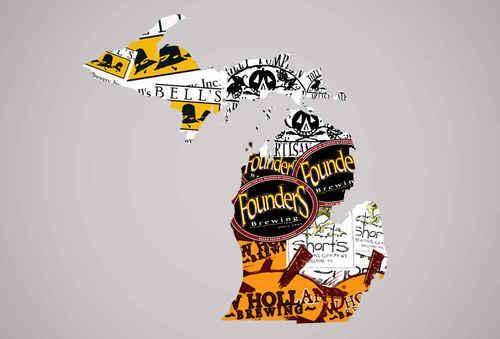
Credit: Jennifer Bui
4. Michigan
The Great Lakes State may not be a
prolific hops producer, or contain one brewery for every man, woman, and child
(they do have about two for every 100,000 adults, according to the Brewers
Association). But mittens were meant for holding cold brews, and Michigan
happens to host some of the best damned breweries in the
country.
There’s a reason that the annual release of Bell’s
Oberon is like a state holiday, and why its Two-Hearted is
consistently ranked among the best IPAs in the world, even as many
drinkers don’t realize it’s an IPA. Or why Larry Bell’s neighbors to the North,
Grand Rapids’ Founders, has become one of the nation’s most respected brewers,
so much so that Grand Rapids is now on the map as a destination beer city. Why,
folks set up shop in the tiny lake town of Bellaire just to sip Short’s, or head
South to Dexter for a look at how Jolly Pumpkin is
made.
Beer in Michigan is a way of life, an economic booster
that’s helping Detroit pull out of the apocalypse and a soul cleanser up in the
UP, where long winters are made better with a growler from Ore Dock. And if
that’s not convincing enough, consider this: in Ann Arbor and East Lansing, when
the chaos of a tailgate clears, you’ll see as many empty bottles of craft beer
scattered about as you will tallboys with holes punched in the side. In
Michigan, beer love starts early.
3. Colorado
Everywhere you look in Colorado — literally
everywhere — there is beer. There is no escaping the beer. This is a good thing.
Everyone with a beard brews beer, and everyone has a beard, which, by the law of
syllogism or something, means literally everyone brews beer. And, damn, do they
do it well.
Oskar Blues started the craft can revolution,
and if you haven’t had a GUBNA, change that. Avery has an entire run of bombers
called the Dictator Series. New Belgium is distributing with the big boys thanks
to an amber ale and a cruiser bike. Crooked Stave is souring things that man
previously assumed un-sour-able. Great Divide has proven once and for all that
the Yeti exists, and he will mess you up. And the whole state’s in on it — even
the guy who just had a frozen chocolatini with dinner can rattle off 10 upstart
breweries you won’t hear of for years. Beer is everywhere. Everywhere is
beer.
2. California
Manifest Destiny gave us California,
and it gave us back beer. Literally, the entire state makes the stuff, from Weed
Alehouse & Bistro in a city called Weed (seriously) about 40 minutes from
the Oregon border, all the way down to San Diego, which we’re gonna go ahead and
deem the most dominating beer city in world history — thanks to Stone and Green
Flash of course, but also Port, Coronado, Lost Abbey, Ballast Point, AleSmith
(find their Wee Heavy), and the other 70+ operations brewing flawless beer with
abandon.
God, there’s just so much to talk about here.
Without hoppy vanguard Sierra Nevada, 99% of the beers we’re lauding (and… this
story!) probably wouldn’t exist. Lagunitas’ commitment to growing national
distribution while maintaining quality is second to none. 21st Amendment has a
Watermelon Wheat to lure the beer-scared in, plus a perfectly portioned canned
Lower De Boom barley wine to finish them off. Anchor’s been making whatever the
hell steam beer is for almost 120 years. Firestone Walker’s Double Jack is
probably the most deceptive 9.5-percenter you’ll ever accidentally drink too
much of. And then, of course, there’s Pliny. Pliny, Pliny, Pliny! Pliny. And no,
it’s not overrated.
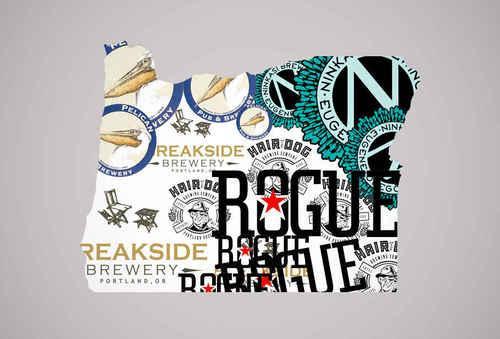
Credit: Jennifer Bui
1. Oregon
California and Washington might have more
brewers, but dammit, they’ve also got more people. More importantly, they don’t
have the density of Oregon’s offerings. Or the quality. Oregon’s long been at
the forefront of the craft industry, with brewers like Widmer Brothers, Rogue,
Full Sail, and Deschutes leading the national charge as gateway beers for people
who want something more out of their pints. But they’re just the OGs of what
might be the epicenter of the craft beer movement.
Much ballyhoo has been made of the sheer
number of breweries in the Portland metro area, which tops out at more than 70
and counting… but this isn’t a case of quantity over quality. It’s a case of
quantity meeting quality head on. Portland houses an insurmountable number of
great breweries — not good, pretty good, or wonderful, but effin’ great
breweries — that are changing the landscape of modern brewing. Hair of the Dog,
Breakside, Cascade, Upright, Ecliptic, the Commons, Burnside, Lompoc… it just
keeps going. Even the “crappy” breweries by Portland standards would bury most
of their peers based on pure deliciousness.
But that’s just one city in a state full of
amazing brewers dotting the state, from the coastal Pelican to the high desert’s
10 Barrel, mid-state’s Ninkasi, Southern Oregon’s uncleverly named Southern
Oregon Brewing, Mt. Hood’s Double Mountain… basically, if you enter a city or
town in Oregon without a solid brewery, you’ve probably crossed into Washington
or Idaho. Or maybe the capital of Salem… which sucks. But you’ll still find a
great brewpub serving some of the best beer in America, made in Oregon, with
Oregon hops, by a bearded Oregonian who’s probably in a band that sucks… that’s
the Oregon way. Oregon beer, more than any, has helped introduce the masses to
the potential of drinking great brews, and, with new breweries seemingly opening
on a weekly basis, it’s the best damn place to be a beer lover in the US.




 © /Harper's Bazaar Reese Witherspoon was 'terrified' of
'Wild' sex and drug scenes
© /Harper's Bazaar Reese Witherspoon was 'terrified' of
'Wild' sex and drug scenes
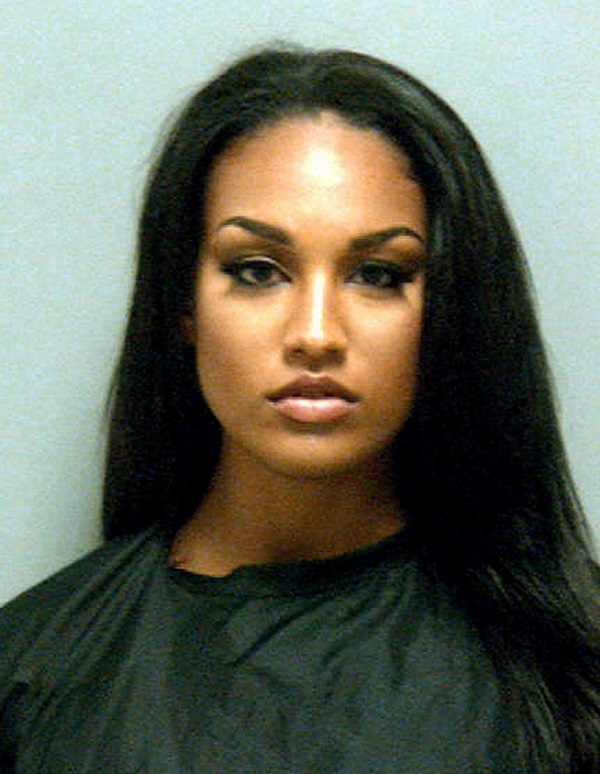

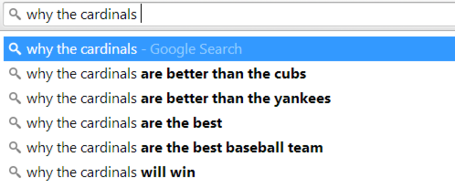

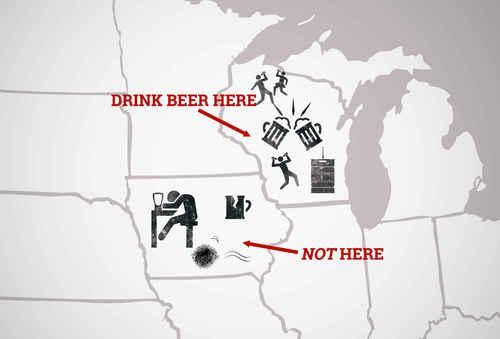
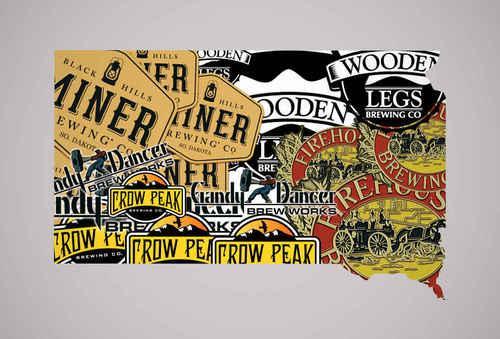
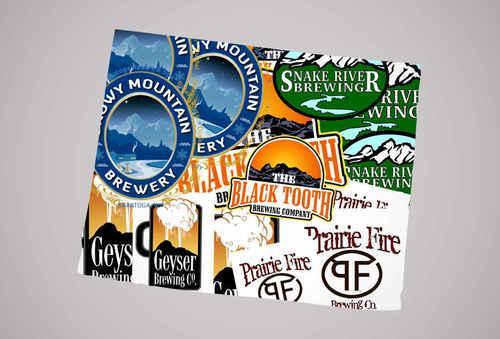
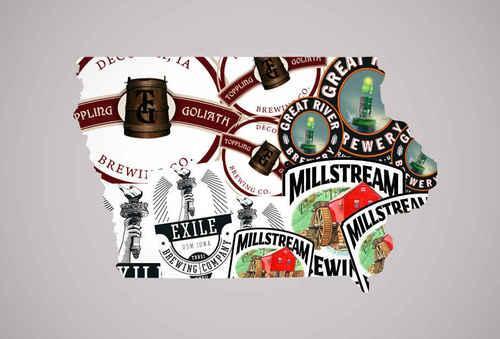
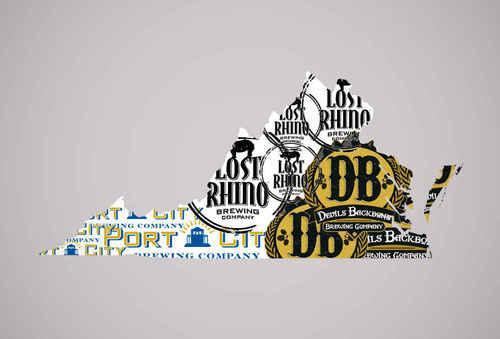
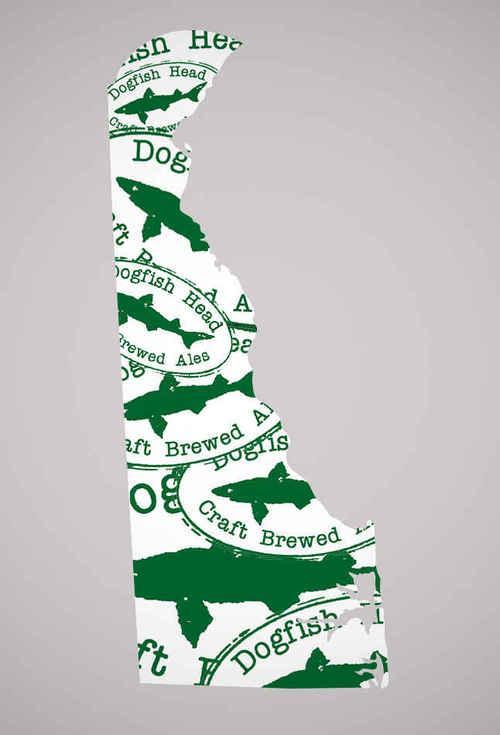
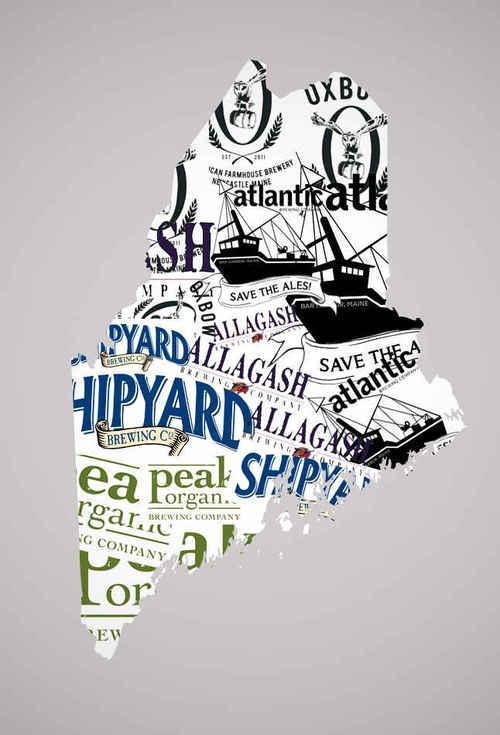
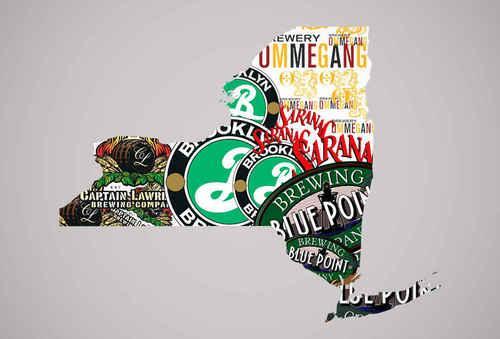


Get the latest Milwaukee Brewers news with Brew Crew Ball